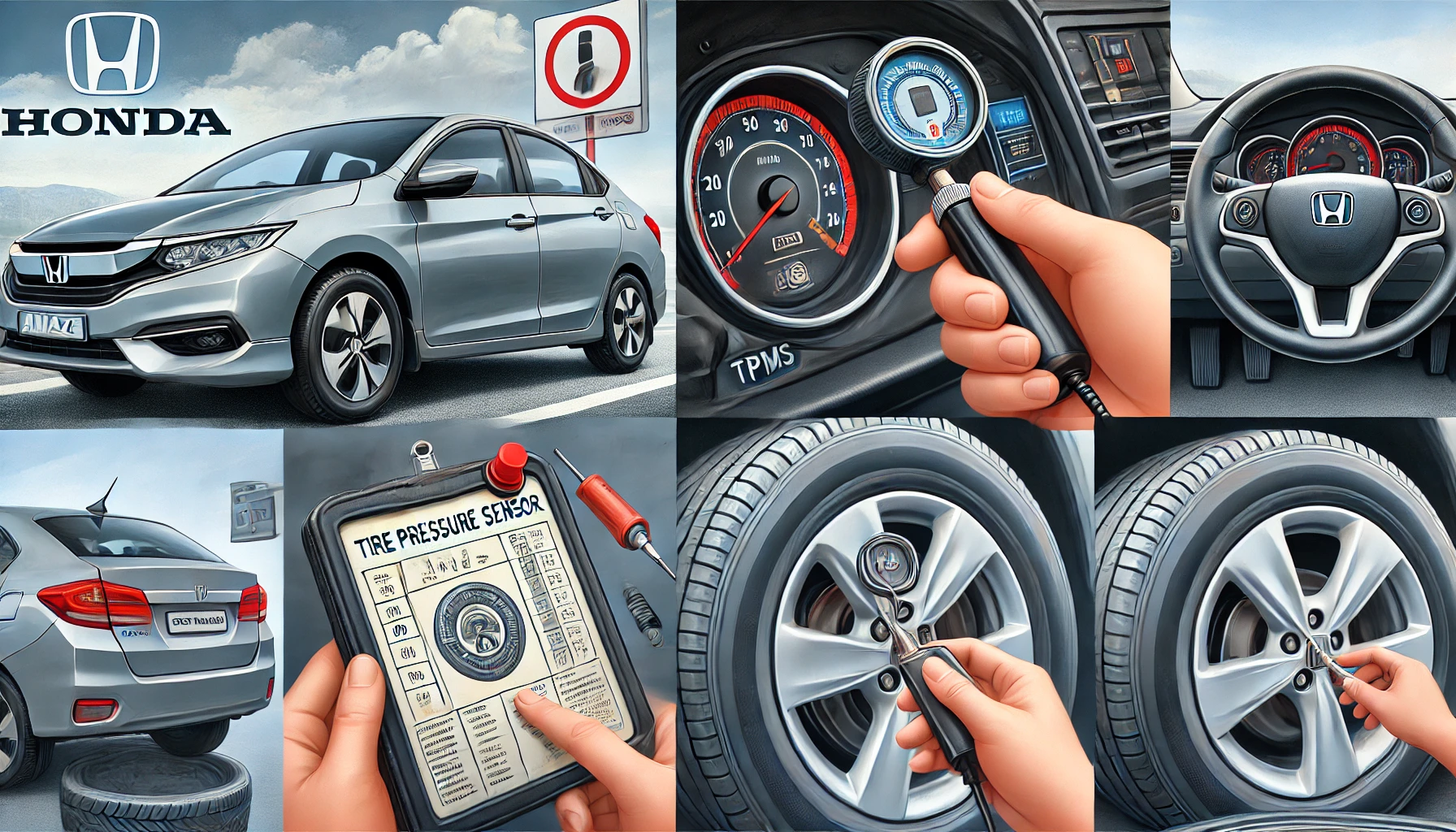
The Honda Amaze, like most modern vehicles, comes equipped with a Tire Pressure Monitoring System (TPMS) to alert drivers when a tire’s pressure is below the optimal level. However, these systems can sometimes trigger false warnings or develop faults that need attention.
Common Causes of TPMS Faults in Honda Amaze
- Sudden Temperature Changes 🌡️
Cold weather can cause a temporary drop in tire pressure, which may trigger the TPMS warning. Similarly, high temperatures can cause pressure to rise, causing the system to give false alerts. - Battery Life of TPMS Sensors 🔋
TPMS sensors usually have a battery life of 5-10 years. For an Amaze model that has been around for a few years, an older sensor battery may be causing the alert. If your car is more than five years old, the TPMS sensor batteries could be failing. - Faulty or Damaged Sensors
Sensors located in the tire valve can get damaged, especially during tire replacement or repairs. In some cases, a damaged sensor will lead to persistent warning lights. - Interference from Electrical Devices
Sometimes, other wireless devices can interfere with the TPMS signal, causing momentary disruptions or false alarms.
Steps to Fix a TPMS Warning in Your Honda Amaze
1. Check Tire Pressures Manually
- Use a manual gauge to check each tire’s pressure and compare it to Honda’s recommended levels, usually found in the door jamb sticker.
- If a tire is low, inflate it to the correct pressure. Evenly balanced tires can often clear the warning light if it was triggered by an imbalance.
2. Resetting the TPMS Light
Honda Amaze models usually allow a manual reset. Follow these steps:
- Start the car and locate the TPMS button (often near the dashboard or steering wheel).
- Press and hold this button until the TPMS light flashes, which indicates the system is recalibrating. Drive for 15-20 minutes to complete the reset process.
3. Inspect TPMS Sensors for Physical Damage
- If the warning persists after a manual pressure check and reset, a sensor may be damaged.
- Visit a certified technician to inspect each sensor, as a damaged TPMS may require professional replacement.
4. Update TPMS Module Software
Sometimes, outdated TPMS software can lead to false warnings. Check with a Honda dealer for the latest software update.
When to Seek Professional Help
If the TPMS warning remains on after following these steps, it’s likely that a sensor is faulty or the TPMS module itself needs attention. A Honda service center will have the diagnostic tools to pinpoint the exact issue, whether it’s a single sensor or a system-wide fault.
